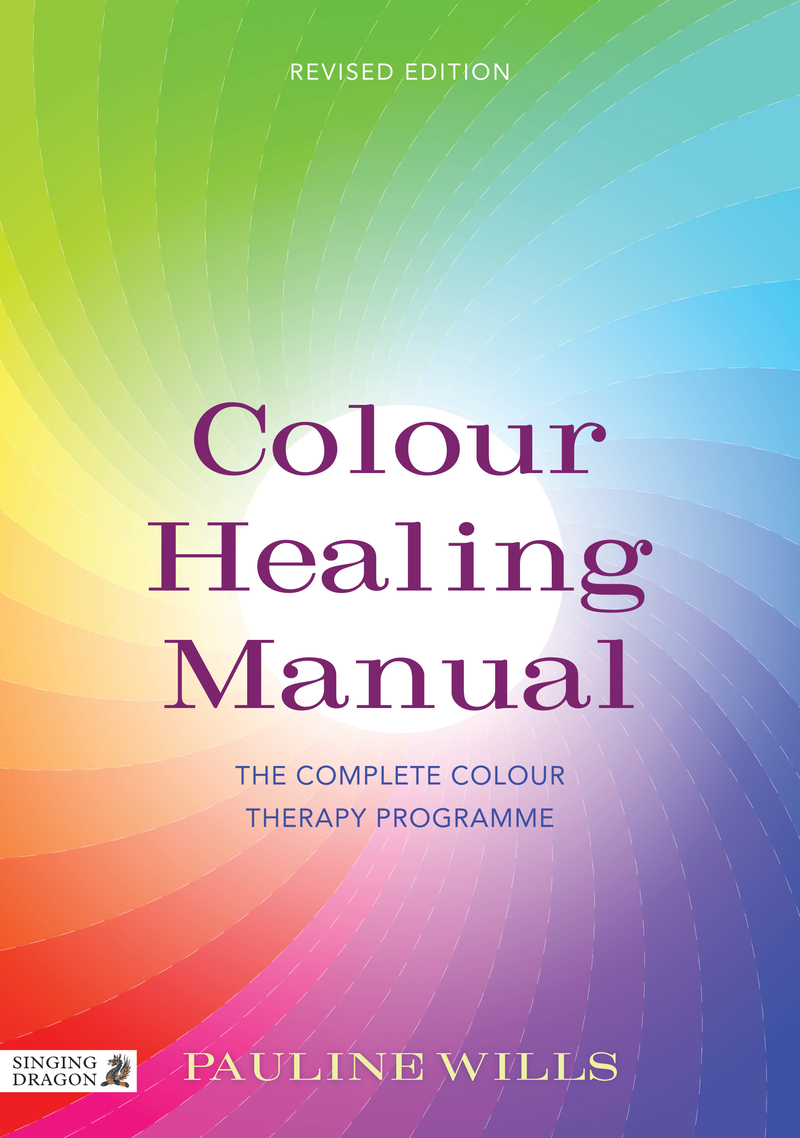The Singing Dragon new titles catalogue is available to view online and download. It features our complete range of titles coming to you over the next few months. There is plenty to look out for including new books on acupuncture, Chinese medicine, Qigong, Daoism, yoga, and complementary therapies.
All the titles, author names, and covers are interactive; just click on them to be taken to the book or author page on the Singing Dragon website.
health care
Singing Dragon Bodywork Catalogue 2013
Click on the box below to browse through our online Bodywork catalogue. Including titles on massage, reflexology, shiatsu, cranio-sacral therapy, yoga, and aromatherapy, this is an indispensable resource for anyone who cares for the human body.
All the titles, author names, and covers are interactive; just click on them to be taken to the book or author page on the Singing Dragon website.
How to breathe more easily with COPD
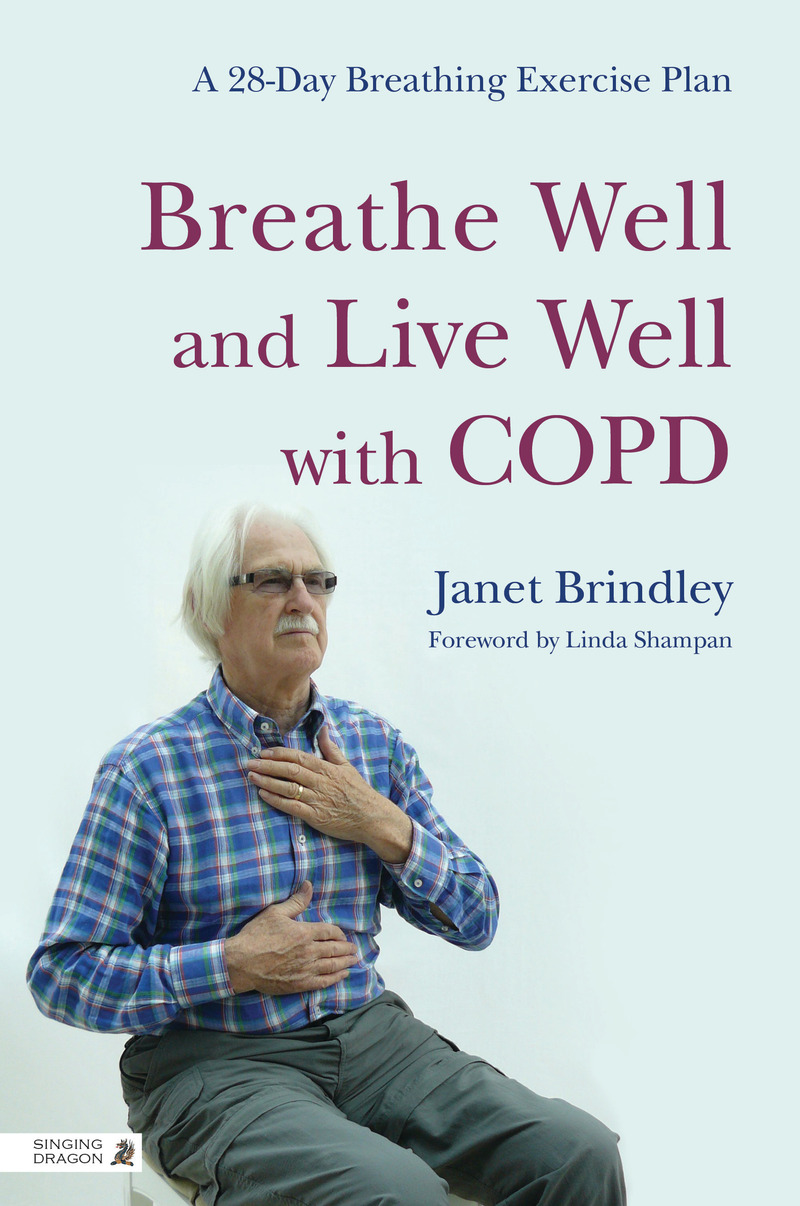 An exercise taken from Janet Brindley’s Breathe Well and Live Well with COPD to help easy relaxed breathing using a check list of problems to look out for.
An exercise taken from Janet Brindley’s Breathe Well and Live Well with COPD to help easy relaxed breathing using a check list of problems to look out for.
Click here to read the extract
Janet Brindley came across therapeutic breathing exercises in 1998. They dramatically improved her asthma, and that of her fourteen-year-old son. She then left her job as a hospital biochemist and taught yoga and Buteyko breathing techniques. She has since worked with doctors, physiotherapists and nurses to develop a professional training course. This training course was used as part of an MSc Respiratory Physiotherapy module at Coventry University. She lives near London, UK.
Early therapeutic uses of light and colour – extract from Colour Healing Manual
Taken from Pauline Wills’ Colour Healing Manual, in this extract the author discusses how colour, light and healing have traditionally been linked across a range of ancient civilizations – and what these can mean for today’s uses of colour therapy.
Click here to read the extract
Pauline Wills is a qualified yoga instructor, reflexologist and colour practitioner and pioneered the integration of colour with reflexology. Her first introduction to the healing power of colour was through yoga and then through the Maitreya School of Colour Healing. She is the co-founder of The Oracle School of Colour in London, where she teaches and practises colour therapy and reflexology. She has written numerous books on complementary therapies.
© 2013 Singing Dragon blog. All Rights Reserved
A quick exercise that will work wonders on your jaw
 Combination exercise to strengthen buccinator and risorius muscles
Combination exercise to strengthen buccinator and risorius muscles
Place a cork or something of a similar suitable size between your teeth to keep your lower jaw down. Hold the position and simultaneously pull the corners of mouth straight sideways.
Repeat 10 times. Close your mouth and rest for a few seconds. Place the cork again and repeat another 10 times.
IMPACT ON APPEARANCE: Tones the lower cheek.
IMPACT ON HEALTH: Relaxes and lengthens jaw-closing chewing muscles.
Vital Face by Leena Kiviluoma has a whole programme of facial exercises and massage for health and beauty (some with corks and some without!) find out more here.
 Vital Face
Vital Face
Facial Exercises and Massage for Health and Beauty
Leena Kiviluoma
This is a fully-illustrated guide to stretching and massage techniques to relax the facial, neck and shoulder muscles. The exercises address health issues such as teeth clenching and grinding, pain in the face, jaw, head or neck, and can improve the effects of Bell’s Palsy. They also help reduce facial lines and leave the skin healthy and glowing.
PRECAUTIONS:
– Perform all the stretches slowly and gently
– Concentrate on the stretch
– Stretch the chewing muscles carefully to a point of mild discomfort and hold the stretch for a while. The discomfort should begin to fade during the stretch, when the stretch gradually relieves tension and loosens your chewing muscles.
– Keep the muscles you are stretching relaxed. Breathing deliberately during the stretching helps you relax and control the stretches. Enjoy the relaxing feeling of stretches.
– If a stretch feels too uncomfortable and tenses your muscles, decrease the force or the range of movement or both.
– The feeling of the stretch should not be painful. It should not produce pain in the muscles or in the joints. Distinguish the feeling of a healthy muscle stretch from the sensation of pain.
– Hold each stretch for the recommended time and repeat each stretch the recommended number of times. You can increase the duration of a stretch as well as the number of repetitions if you like and as long as it feels comfortable.
– Application of moist heat or cold is sometimes a helpful relaxing procedure before the stretching of the chewing muscles.
Caution: Never perform sudden and forceful movements during stretching or try to force your jaw beyond its physiological limits. Those with a history of a jaw dislocation must be careful not to perform jaw movements that are too wide.
Japanese Holistic Face Massage – More than a facial, by Rosemary Patten
 The face reflects who we are, reflects our personality, state of health and our spiritual balance. We pick up a lot of information about a person just by looking at their face. To the ancient Japanese and Chinese, a beautiful face was the ultimate prize as it was a reflection of optimum health and of course with good health comes a long life. Longevity achieved through preventing ill health was, and still is, the aim of traditional Chinese medicine.
The face reflects who we are, reflects our personality, state of health and our spiritual balance. We pick up a lot of information about a person just by looking at their face. To the ancient Japanese and Chinese, a beautiful face was the ultimate prize as it was a reflection of optimum health and of course with good health comes a long life. Longevity achieved through preventing ill health was, and still is, the aim of traditional Chinese medicine.
Japanese face massage became popular in the Far East during the eighteenth and nineteenth centuries, especially among the Geisha, for its health-giving benefits and its ability to reflect inner calm on their porcelain-like faces. Not much was known of this unique massage in the West until after the Second World War but today it is practised all over the world.
Many facial routines focus on cleansing and may include a basic massage designed to relax the recipient. The Japanese face massage is much more than a massage or facial. From the very beginning of the routine, the recipient experiences a glorious sense of release within the first two movements as the flowing but firm touch sets the scene for an experience of peaceful tranquillity and healing. There is a feeling of liberation as the neck and shoulders are massaged, lifting tension and allowing calm to descend. These opening movements pave the way for the deep healing experience you get from the Japanese face massage.
Unlike basic facial routines, the techniques in Japanese face massage focus deeper to achieve more than a cleanse, tone and moisturise. Acupressure points around the face and head are gently manipulated and the meridians are traced to access the body’s bio-energetic flow to bring balance.
 The massage pushes oxygenated blood and nutrients to penetrate the deep layers of the skin to nourish and renew cells. The gentle flowing effleurage movements are not only relaxing but also encourage the release of cellular matter and the removal of de-oxygenated blood via the lymphatic system. The effect is instantly visible as circulation to the face is improved, bringing a lustre to the skin which manifests as an inner glow of calm and vitality. Fine lines are diminished and the contours of the face become more defined, especially noticeable around the eye area.
The massage pushes oxygenated blood and nutrients to penetrate the deep layers of the skin to nourish and renew cells. The gentle flowing effleurage movements are not only relaxing but also encourage the release of cellular matter and the removal of de-oxygenated blood via the lymphatic system. The effect is instantly visible as circulation to the face is improved, bringing a lustre to the skin which manifests as an inner glow of calm and vitality. Fine lines are diminished and the contours of the face become more defined, especially noticeable around the eye area.
All bio-energy pathways or meridians either start or finish in the face. As the acupressure points are accessed there is a deep sense of comfort and nurturing. Additionally, the sequence of the movements and the tracing of the pathways or meridians encourages Ki (universal life force energy) to flow where it is most needed. Ki energy is responsible for correctly functioning bodily fluids and the smooth running of body organs such as the kidneys and the liver.
There has been a myriad of research on the effects of stimulating the acupressure points over the past fifty years as Western scientists slowly realise what Eastern medicine has known for over 4,000 years. Acupressure points on the face react instantly to touch, releasing endorphins and bypassing the central nervous system due to the close proximity to the brain. There is a prevailing sense of well-being when the hormones are stimulated. The autonomic nervous system is calmed and peace descends as healing on all levels takes place. The Japanese face massage is truly holistic as it not only improves the appearance of the face but also helps the body function better. A truly wonderful combination of benefits that leaves the recipient feeling mentally and emotionally revived.
Rosemary Patten is a naturally gifted holistic therapist with over 23 years’ experience in helping people feel better. She began her professional career within the NHS, in hospital settings, where her extensive contact with those in rehabilitation gave her an invaluable grounding in understanding the nature of disease. A master Reiki practitioner, aromatherapist, reflexologist, qualified beautician and in many other holistic therapies, Rosemary founded Rose Health and Well Being Natural Health Centre, which has now evolved into Equinox Rose. This is a combined holistic services consultancy delivering various natural therapy workshops, consultations on business development for therapists and a clinic specialising in energetic healing. Japanese Holistic Face Massage is among the range of therapies Rosemary uses to help her many clients make a breakthrough physically or emotionally. Rosemary believes passionately in a holistic approach to diagnosing root causes of illness, especially the impact of stagnant energetic flow within and around the body. She lives in Kent, UK.
© 2013 Singing Dragon blog. All Rights Reserved
Relieve tension headaches with these facial massage techniques – extract from Vital Face by Leena Kiviluoma
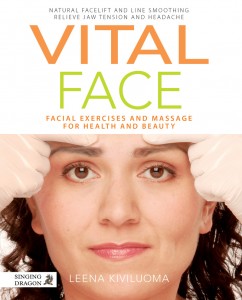 Taken from Vital Face, this selection of quick and easy exercises designed for the forehead will enable you to remove stiffness, eliminate tension headaches, and smooth out facial lines.
Taken from Vital Face, this selection of quick and easy exercises designed for the forehead will enable you to remove stiffness, eliminate tension headaches, and smooth out facial lines.
Click here to read the extract.
Feel the difference? Read the book for more exercises to relax and rejuvenate the whole face, head and neck.
‘Leena Kiviluoma has done trailblazing work in developing her ingenious, easy-to-use facial muscle care technique. I use her book when I teach anatomy, physiology and skin care to trainee beauty care professionals. With the help of this book clients of beauty therapists can also practice effective self-applied beauty routines at home which will help to maintain a youthful appearance.’
-Anna-Liisa Halsas-Lehto, Master of Health Science, Vocational Teacher, Beauty Therapist
‘I tried this programme developed by Leena Kiviluoma. Both the relaxedness and the capacity of my jaw increased noticeably.’
-Fitness and Health Magazine, Finnish edition
Leena Kiviluoma is a physiotherapist working as a teacher and consultant in the fitness, beauty, health and rehabilitation industries. Her clients have included the Finnish National Opera, the Finnish National Theatre, The Parliament of Finland and many other companies, and she has contributed to numerous articles on fitness and beauty in magazines and newspapers. She began to develop her medical-based, facial muscle care technique and therapy in 1990 and her two books on the subject have been translated into many languages. She lives in Helsinki, Finland.
© 2013 Singing Dragon blog. All Rights Reserved
Raise awareness of Ehlers-Danlos Syndrome this May
 May is Ehlers-Danlos Syndrome (EDS) Awareness Month, raising awareness of this multi-systemic and complex connective tissue disorder, and supporting those who live with this invisible condition.
May is Ehlers-Danlos Syndrome (EDS) Awareness Month, raising awareness of this multi-systemic and complex connective tissue disorder, and supporting those who live with this invisible condition.
As awareness and understanding of EDS are central to early diagnosis and management of symptoms, take the time to learn about the condition, and simple steps that can help the many people who live with it.
Learn more about EDS (especially type III – Hypermobility Syndrome) with these interviews and resources, and more:
Books:
- A Guide to Living with Hypermobility Syndrome
- A Multidisciplinary Approach to Managing EDS Hypermobility Syndrome
Interviews:
- Understanding and treating the complex chronic patient – an interview with Isobel Knight
- Bending without Breaking – Author Isobel Knight talks about dancing and living with Hypermobility Syndrome
Organisations:
- Ehlers-Danlos Support UK
- Ehlers-Danlos National Foundation USA
- The Hypermobility Syndrome Association UK
See also:
- A Guide to Living with Hypermobility Syndrome (Facebook)
- A Multidisciplinary Approach to Managing EDS Hypermobility Syndrome (Facebook)
© 2013 Singing Dragon blog. All Rights Reserved
The Development of Kinesiology – extract from Principles of Kinesiology by Maggie La Tourelle with Anthea Courtenay
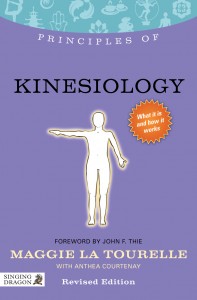 In this extract, the authors describe the early development of Kinesiology, and the unexpected discoveries which informed the basis of many branches of the practice. They also look at how Kinesiology fits within the idea of truly holistic medicine, showing how it can bring change and restore balance in people’s lives.
In this extract, the authors describe the early development of Kinesiology, and the unexpected discoveries which informed the basis of many branches of the practice. They also look at how Kinesiology fits within the idea of truly holistic medicine, showing how it can bring change and restore balance in people’s lives.
Click here to read the extract
Praise for the first edition of Principles of Kinesiology:
“A well-crafted book, ideal for newcomers to the subject, whether lay or professional…an accurate and balanced guide to this fast-growing area of healing.”
– Leon Chaitow ND, DO, MRO, naturopath, osteopath and acupuncturist, and Editor-in-Chief of the Journal of Bodywork and Movement Therapies
“A much-needed book…to get help with your pain, stress and improve your performance with energy balance and muscle facilitation.”
– John F. Thie DC, founder and author of Touch for Health
Maggie La Tourelle has worked in the field of holistic healthcare for thirty years as a practitioner, teacher and writer integrating kinesiology, counselling, psychotherapy and NLP. She is an honorary member of The Kinesiology Federation, and a member of The Association for Therapeutic Healers, The British Association for Counselling and Psychotherapy, The Scientific and Medical Network and the Guild of Health Writers. She lives in London, UK.
Anthea Courtenay is a freelance writer, journalist and translator based in London.
Becoming Aware of the Energy Body, by Damo Mitchell
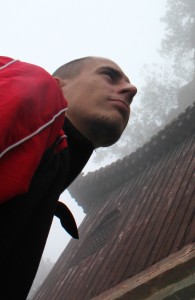 Anybody engaging with the internal practices of the Daoist tradition will no doubt encounter many difficulties along the way: many of the terms are written in metaphorical language, teachings are often contradictory and on top of that there is the crisis of faith often caused by the question, ‘is this experience real or is it my imagination?’ Even with the help of an experienced teacher there will be times when students will find themselves fumbling in the dark with practice yielding more questions than answers. These are challenges which any seeker of the way faces and it is the role of a concrete system of practice to help guide the practitioner through this darkness towards the state of conscious elevation which is the goal of all Daoist arts.
Anybody engaging with the internal practices of the Daoist tradition will no doubt encounter many difficulties along the way: many of the terms are written in metaphorical language, teachings are often contradictory and on top of that there is the crisis of faith often caused by the question, ‘is this experience real or is it my imagination?’ Even with the help of an experienced teacher there will be times when students will find themselves fumbling in the dark with practice yielding more questions than answers. These are challenges which any seeker of the way faces and it is the role of a concrete system of practice to help guide the practitioner through this darkness towards the state of conscious elevation which is the goal of all Daoist arts.
One aspect which can cause a great deal of confusion is around the meridian system. Is the idea of energetic pathways of Qi running through the body purely a conceptual framework or is it in fact an actual part of the human body-system? Whilst some may accept the concept of meridian pathways purely on faith others will disregard it on the basis that they have been brought up in a science-based society where logic prevails. In my opinion both of these stances have their own limitations. I have always sat somewhere in the middle; I am ready to accept that which has been a part of an unbroken lineage for millennia but I am also prone to retaining an element of doubt until proven through my own experience. It was this position I took when considering the meridian system.
I originally studied the meridian pathways in the conventional manner. As part of the Tui Na massage training I undertook alongside my martial arts training, I read textbooks on Chinese medicine and was guided towards locating the various points of the meridian system by my teachers. In this way I developed a working, theoretical understanding of the meridian pathways which I was utilising daily in my practice of Chinese medicine, Qi Gong and the martial arts. It was not until I was introduced to the Heavenly Streams practice of connecting with the meridian system and sending my awareness along their length that I began to understand with no doubt whatsoever that the meridians existed. Through learning how to breathe in a certain way and direct my attention to specific ‘entrance’ points on the meridians I learnt to ‘retune’ the frequency of my mind. Like a radio switching between stations I was able to use the points to translate the energetic realm for me bringing the flows of Qi into the realm of direct experience. Now these pathways I had studied for so long could tangibly be felt. I experienced the flow of information along their length and began to feel the comparative differences between the different channels. I encountered blockages of different types along their length and found that I could move them through focused concentration; as a result I learnt how clearing these blockages had a knock on effect to the physical realm of my body and my health improved.
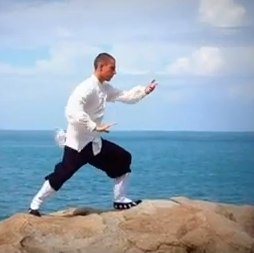 Further exploration led me to understand how various body functions could be controlled through these points, for example one point in particular started me sweating as soon as I put my mind onto it. I did not increase in body temperature but rather just felt as though the pores opened allowing fluid to escape them. Other points allowed me to change my body temperature, energy levels and even my mind-set; I had connected with and learnt how to interface with the energetic ‘control panel’ of my body. Over the years I have learnt to refine this until I am able to adjust the various functions of my body to help me rid myself of illness when in the early stages, change my mind if my moods are working against me or even to prepare my body for internal training. Progression has even enabled me to now see the meridian pathways during my practice; the information of the Qi being connected with is translated visually by my mind and through this ‘inner vision’ I am able to observe the various fluctuations of Qi taking place within my energy body.
Further exploration led me to understand how various body functions could be controlled through these points, for example one point in particular started me sweating as soon as I put my mind onto it. I did not increase in body temperature but rather just felt as though the pores opened allowing fluid to escape them. Other points allowed me to change my body temperature, energy levels and even my mind-set; I had connected with and learnt how to interface with the energetic ‘control panel’ of my body. Over the years I have learnt to refine this until I am able to adjust the various functions of my body to help me rid myself of illness when in the early stages, change my mind if my moods are working against me or even to prepare my body for internal training. Progression has even enabled me to now see the meridian pathways during my practice; the information of the Qi being connected with is translated visually by my mind and through this ‘inner vision’ I am able to observe the various fluctuations of Qi taking place within my energy body.
When teaching, I encourage students to engage in the same practices. Through periods of sitting and connecting through the same entrance points I have taught my students to connect with their own meridian pathways. It is always rewarding to see the face of a student who, for the first time, feels their own energy body; especially if this is a student who has already worked on a purely theoretical level with the meridian pathways up until this point.
There are numerous benefits to experiencing your own meridian pathways. For those interested in improving their own health it is possible to change the very ‘energetic blueprints’ of your own body-system. Great insight into how your body functions and what causes it to move out of balance can be had from exploring the flows of Qi through your own body.
For Qi Gong or Nei Gong practitioners it is very important to feel your own meridian pathways once you wish to move beyond the earliest stages of development. Trying to work with your own Qi without being able to feel where it is flowing is like trying to find your way through the darkness without a light. I believe that many of the problems people have caused themselves through incorrect Qi Gong training could have been avoided if people had taken the time to learn to feel their own Qi flow before going too deep into their training. Any health problems from incorrect training can clearly be felt developing within the energy body long before they manifest as a physical or psychological imbalance. I was taught that students of the Daoist tradition would originally have spent much time studying the energy body before they moved past even the most preliminary of breathing exercises; these studies would have focused largely on experiential feeling of the meridian pathways supported by theoretical teachings and charts.
Perhaps some of the greatest benefits of connecting with your own meridian system can be had by those practicing Chinese medicine modalities such as Shiatsu, Tui Na or acupuncture. Is it possible to accurately treat somebody’s energetic imbalance if you have not experienced this Qi flow for yourself? It is possible to learn every function of every point in the body by memorising lists and developing a theoretical understanding but this should be secondary to actually experiencing what happens when the individual points are stimulated. It is my opinion that experiential understanding of the meridian points and pathways needs to be an integral part of any sincere Chinese medicine practitioners training.
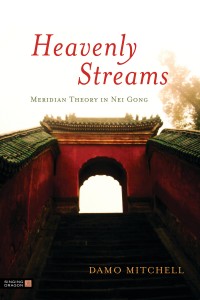 The meridian system is the energetic connection between the energies of Heaven and Earth; it sits at the point between the physical world and the realm of pure consciousness. It is the pivot of human creation, development and eventual demise. In life we begin to learn about the physical body as soon as we are born. We learn how we can control this vessel we find ourselves within and through this vessel we explore our connection to the physical world. What we are not often encouraged to do is to explore the nature of our inner world, the world of our energy body and for this reason our minds are no longer able to ‘tune into’ the realm of Qi. Thankfully this is an issue easily remedied.
The meridian system is the energetic connection between the energies of Heaven and Earth; it sits at the point between the physical world and the realm of pure consciousness. It is the pivot of human creation, development and eventual demise. In life we begin to learn about the physical body as soon as we are born. We learn how we can control this vessel we find ourselves within and through this vessel we explore our connection to the physical world. What we are not often encouraged to do is to explore the nature of our inner world, the world of our energy body and for this reason our minds are no longer able to ‘tune into’ the realm of Qi. Thankfully this is an issue easily remedied.
As a general rule of thumb I believe that a fairly high level of energetic connection is attainable within a year of daily practice. Obviously this length of time will vary from person to person but a year’s practice is what I have seen from teaching my own students. Over the first few weeks a student can begin to feel the easier parts of the meridian pathways which are generally the lengths of Qi flow on the forearms, fingers, lower legs and toes. From here it seems to take around a year of daily practice for the whole energy body to open up to your awareness. From here it is possible to use this foundation of feeling the meridians to be able to scan their length for imbalances and change their nature through controlled use of the body’s meridian points. The key is to progress steadily and slowly; do not rush anything. Take your time, persevere and most importantly: have fun with the process.
Damo Mitchell has studied the martial, medical and spiritual arts of Asia since the age of four. His studies have taken him across the planet in search of authentic masters. He is the technical director of the Lotus Nei Gong School of Daoist Arts, and teaches Nei Gong in the UK, Sweden and the USA. He is the author of Daoist Nei Gong: The Philosophical Art of Change, and Heavenly Streams: Meridian Theory in Nei Gong, published by Singing Dragon.
© 2013 Singing Dragon blog. All Rights Reserved
